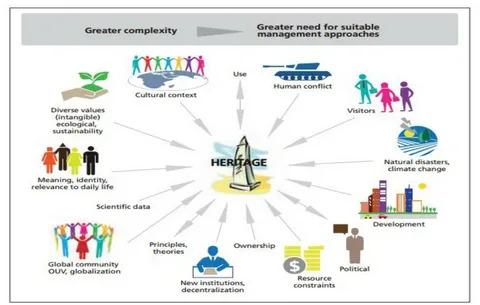Heritage Management Services: Protecting Intangible Cultural Heritage

Cultural heritage is not just about physical monuments, historical buildings, or artifacts; it also includes the traditions, practices, and expressions that are passed down through generations. This non-physical aspect is known as intangible cultural heritage. It encompasses oral traditions, performing arts, rituals, festivals, and craftsmanship skills. Protecting these intangible elements is crucial for preserving the identity and diversity of communities around the world. Heritage management services play a vital role in safeguarding these cultural treasures, ensuring they are not lost to time or globalization.
What Is Intangible Cultural Heritage?
Intangible cultural heritage refers to the practices, expressions, knowledge, and skills that communities, groups, and individuals recognize as part of their cultural heritage. Unlike tangible heritage, such as buildings or artifacts, intangible heritage is more about living expressions. It includes:
- Oral Traditions and Expressions: These include languages, storytelling, myths, legends, and proverbs.
- Performing Arts: This category covers music, dance, theater, and other forms of artistic expression.
- Social Practices, Rituals, and Festive Events: These involve rituals, ceremonies, festivals, and traditional customs.
- Knowledge and Practices Concerning Nature and the Universe: Traditional knowledge about nature, herbal medicine, and environmental conservation.
- Traditional Craftsmanship: Skills and knowledge involved in making traditional crafts, like pottery, weaving, or metalworking.
Intangible cultural heritage gives a sense of identity and continuity to communities, helping them stay connected to their history and roots.
Why Is Protecting Intangible Cultural Heritage Important?
Intangible cultural heritage is fragile and can easily be lost if not actively protected. Here are some reasons why its preservation is important:
- Cultural Identity and Diversity: Intangible heritage helps maintain the cultural identity of communities, giving them a sense of belonging. It also contributes to cultural diversity, enriching the global cultural landscape.
- Transmission of Knowledge: Protecting intangible heritage ensures the transmission of knowledge, skills, and practices to future generations. This helps keep traditions and practices alive.
- Social Cohesion: Many intangible cultural practices play a role in bringing communities together, fostering social cohesion and mutual understanding.
- Economic Value: Intangible cultural heritage can also have economic value, attracting tourism and promoting traditional crafts and products.
Given its importance, the role of heritage management services in safeguarding intangible cultural heritage becomes vital.
How Heritage Management Services Protect Intangible Cultural Heritage
Heritage management services involve professional efforts to identify, document, preserve, and promote cultural heritage. When it comes to intangible heritage, these services adopt various strategies to ensure its protection:
1. Documentation and Inventory
One of the first steps in protecting intangible cultural heritage is to document it. Heritage management services work on creating detailed records of practices, traditions, and expressions. This involves recording oral histories, filming performances, and writing down rituals and ceremonies. Creating inventories of intangible heritage helps in understanding what needs protection and raises awareness about its significance.
2. Community Involvement and Participation
Intangible cultural heritage belongs to the communities that practice it. Heritage management services engage with these communities to ensure that preservation efforts are respectful and effective. By involving community members, they ensure that the heritage is transmitted in its authentic form. Community participation also helps in identifying which elements of the heritage are most important and in need of protection.
3. Education and Awareness
Educating the public about the importance of intangible cultural heritage is key to its preservation. Heritage management services often conduct workshops, seminars, and educational programs to raise awareness. By teaching younger generations about their cultural heritage, they help ensure its continuity. Additionally, promoting the significance of intangible heritage in schools and through media can foster a sense of pride and responsibility towards preserving it.
4. Safeguarding Practices
Heritage management services develop safeguarding measures tailored to the specific needs of the intangible cultural heritage they aim to protect. This can include supporting traditional practitioners, promoting the practice of rituals and customs, and creating spaces for performing arts. For example, setting up craft cooperatives can help artisans continue their work, while festivals and cultural events can provide a platform for traditional performances.
5. Legal Protection and Policy Development
Creating policies and legal frameworks to protect intangible cultural heritage is another key function of heritage management services. This involves working with governments and international organizations to develop laws that recognize and protect intangible heritage. International conventions, such as UNESCO's Convention for the Safeguarding of the Intangible Cultural Heritage, play an important role in this process. Heritage management services advocate for these protections and work to ensure they are implemented at local and national levels.
6. Promotion and Revitalization
Promoting intangible cultural heritage is essential for its survival. Heritage management services help in promoting traditional practices through cultural festivals, exhibitions, and media coverage. They also work on revitalization projects, which involve bringing back practices that are on the verge of being forgotten. By making intangible heritage more visible and accessible, these services encourage more people to engage with and appreciate it.
7. Adapting to Modern Changes
In today's globalized world, intangible cultural heritage is constantly evolving. Heritage management services help communities adapt to modern changes while maintaining the essence of their traditions. For example, they may assist in incorporating traditional crafts into contemporary design or using digital media to share oral traditions with a wider audience. This adaptation ensures that intangible heritage remains relevant and continues to be practiced.
Challenges in Protecting Intangible Cultural Heritage
Despite the efforts of heritage management services, protecting intangible cultural heritage faces several challenges:
- Globalization: The spread of global culture and media can overshadow local traditions, making them less attractive to younger generations.
- Urbanization and Migration: Rapid urbanization and migration can lead to the loss of traditional ways of life.
- Commercialization: The commercialization of cultural practices can lead to their exploitation and loss of authenticity.
- Lack of Resources: Many communities lack the resources and expertise needed to effectively safeguard their intangible heritage.
Heritage management services work to address these challenges by providing support, resources, and expertise to communities. They also advocate for the value of intangible heritage in a rapidly changing world.
Conclusion
Intangible cultural heritage is a vital part of our shared human experience, providing communities with a sense of identity, continuity, and social cohesion. Heritage management services play a crucial role in protecting this non-physical aspect of culture by documenting, promoting, and safeguarding traditions, practices, and expressions. Through community involvement, education, legal protection, and innovative adaptation, these services help ensure that intangible cultural heritage is preserved for future generations.
By acknowledging the importance of intangible cultural heritage and supporting the efforts of heritage management services, we can contribute to the ongoing protection of our diverse cultural traditions. This not only enriches our understanding of the world but also fosters a greater appreciation for the unique ways in which communities express their identities.









Comments